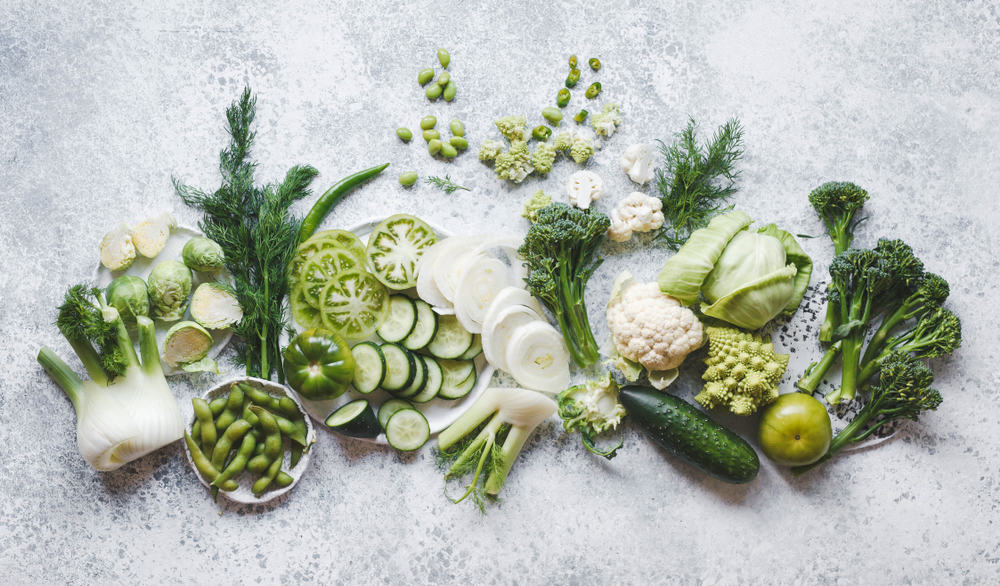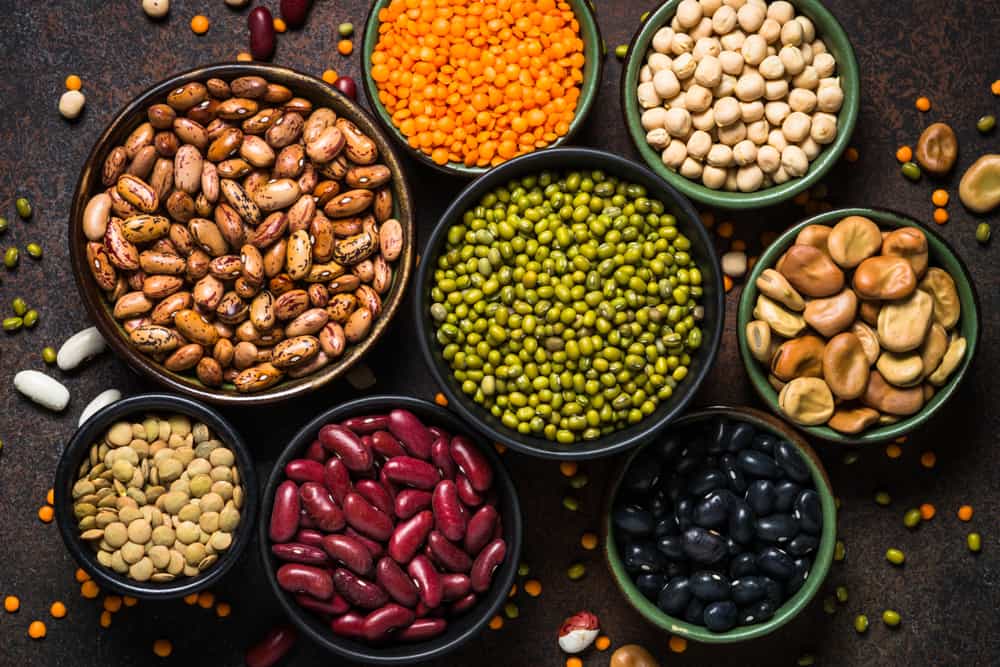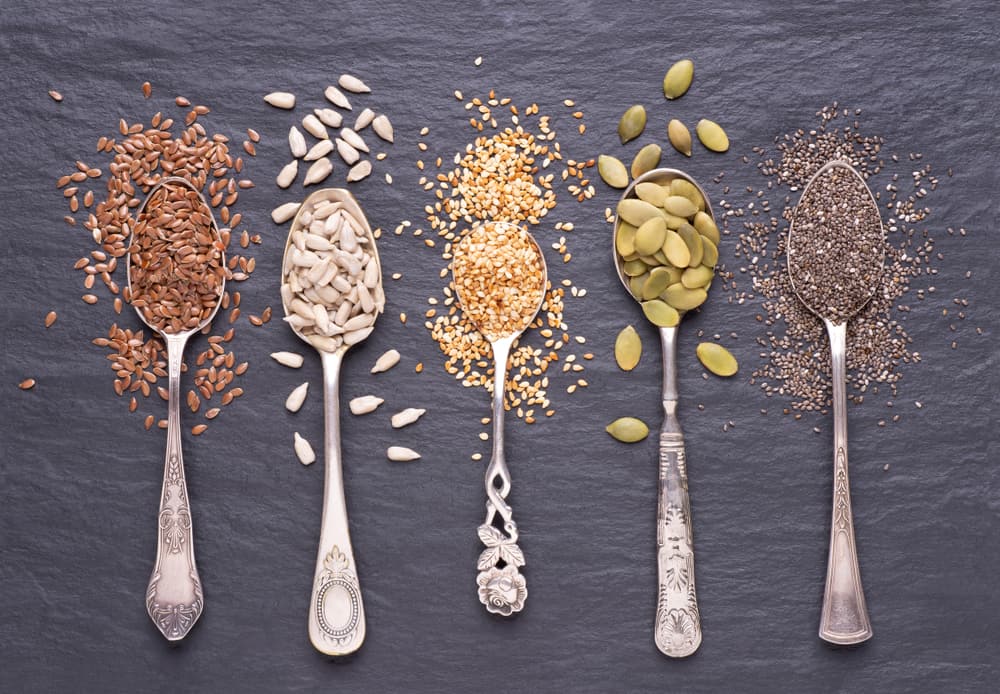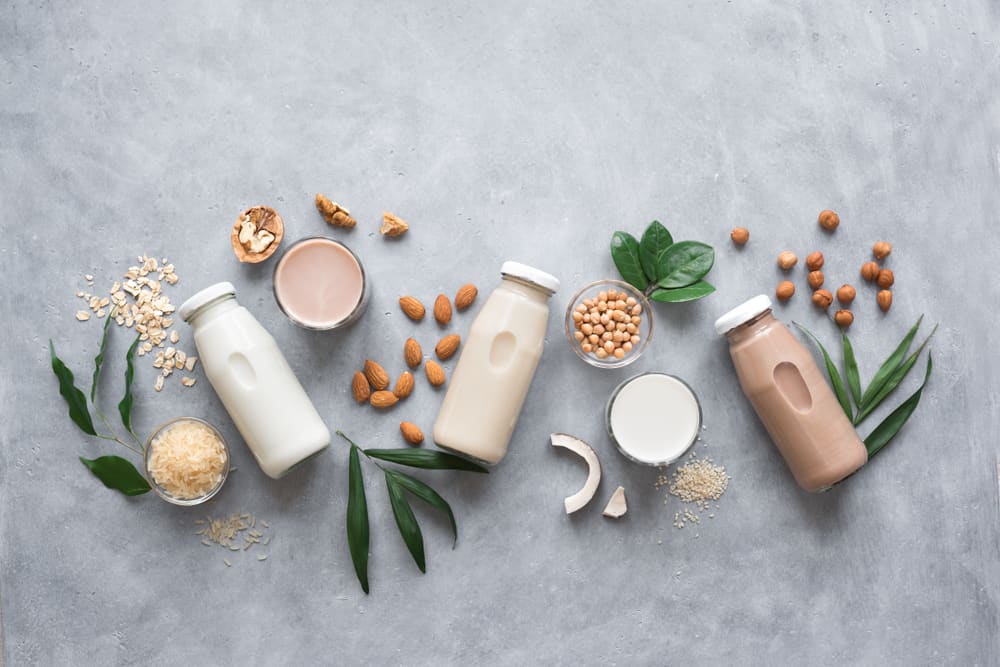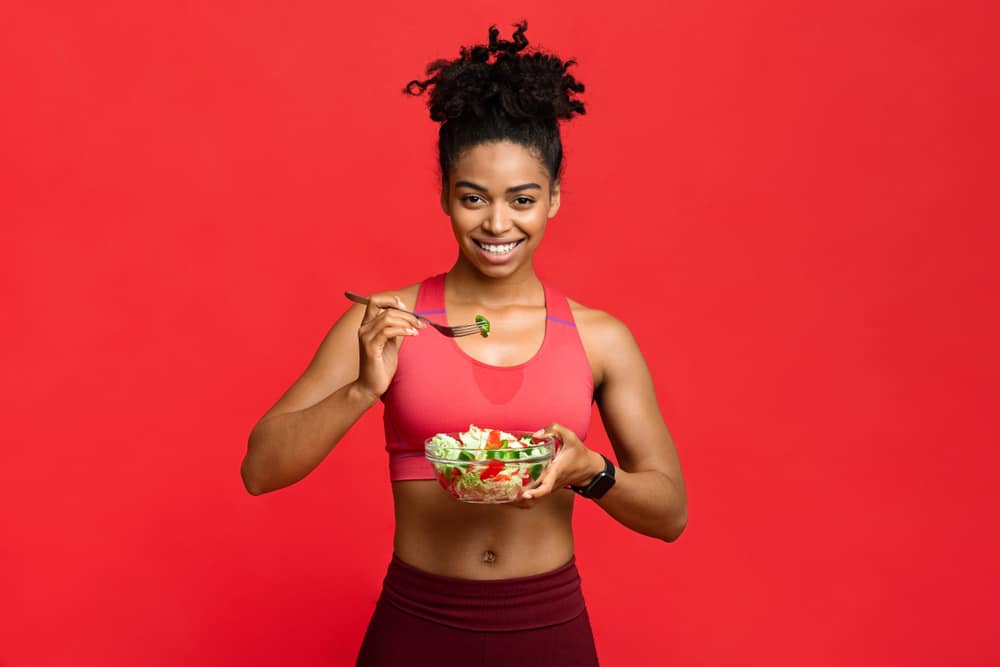Complete Guide to Vegetarian Protein Sources
There has been a significant rise in the popularity of plant-based diets in the last decade. Many vegans and vegetarians remember when the most exciting plant-based option on the menu was a side of fries. With an increase in concern for the environment and modern studies on the benefits of plant-based proteins, this industry has grown to meet the increasing demand.
While it can still be daunting to dive into the world of vegetarian foods, it is much easier to find coherent advice. Not only has the amount of available food increased exponentially, but studies and information about plant-based diets have also become more frequent and readily available. It is now much simpler to create delicious meals full of vegetarian protein and nutrients than it was even a decade ago.
A Brief History of Plant-Based Diets
Though veganism might seem like a new trend, it has been around for centuries. The act of vegetarianism dates back thousands of years.
Pythagoras and Socrates are two of the first documented vegetarians. Pythagoras was a Greek philosopher and mathematician who lived around 500 B.C.E. He was an advocate for ‘benevolence among all creatures.’ Socrates, circa 470 B.C.E., was also a famous Greek philosopher known exclusively through two of his students, Plato and Xenophon. Several Eastern religions have adopted plant-based diets for hundreds of years, and Hinduism, Jainism, and Buddhism is the most well known.
The first vegetarian society was developed in England in 1847, and an American one followed three years later. The term ‘vegan’ wasn’t coined until 1944. Donald Watson used it to differentiate between those who ate dairy products and those who abstained.
Three months after creating the Vegan Society newsletter, Watson had 25 subscribers. When he died in 2005, at the age of 95, there were over 250,000 vegans in Britain and two million more in the United States.
In recent years, there has been a surge of commercially available alternative ‘meats,’ ‘milk,’ and ‘cheeses’ to meet the demands of the growing plant-based population. As of 2020, the vegan or plant-based meat market has grown into an industry worth $20 billion, and it keeps rising.
That’s why it is so easy to incorporate vegan proteins in the weight loss plans from Noom. We love that this program also offers custom meal plans, coaching sessions, daily goal setting, and so much more. Make sure to check out the free trial offer from Noom – available for a limited time!
What is a Protein?
To understand why protein is so important to health, we need to know what it is made of and how they function.
Protein is one-third of the macronutrient trio alongside fats and carbohydrates. These three components are integral in maintaining healthy, energetic bodies and minds. Proteins are found in every muscle, tissue, and fiber in a body, and each human is made up of over ten thousand different proteins.
The building blocks of these molecules are called amino acids. Over twenty amino acids make up a protein, most of which can be manufactured by the body without outside help. The ones that are not already available, and therefore must be obtained through food are called essential amino acids. These nine amino acids include leucine, threonine, valine, methionine, lysine, tryptophan, isoleucine, histidine, and phenylalanine.
Some of these might sound familiar, and others completely foreign, but all are necessary for human development. It is still common to think primarily of meat when protein is mentioned, and that is not without reason. Animal proteins contain all nine essential amino acids in one neat package.
On the surface, that makes it less complicated than combining proteins. In reality, vegetarian proteins are easy to come by, and eating all nine essential amino acids in the day takes no extra thought, assuming a person is eating a well-rounded diet.
How Much Protein Is Enough?
The amount of protein an individual needs is dependent on many factors. Age, weight, and activity level are significant considerations when looking into macronutrient ratios.
As research develops, there is more evidence that the amount of protein needed is not a cut and dry percentage but is dependent on what you are pairing it with. Ultimately, it doesn’t matter how much protein you are eating if your body isn’t absorbing it properly.
According to the Journal of the International Society of Sports Nutrition, the average suggested minimum protein intake per day for an adult is 0.36g per one pound of body weight. That might be adequate if a person has a perfectly healthy gut with plenty of enzymes to help break down as much protein as possible into something the body can use, according to another study published in JISSN.
It should be noted that many health professionals consider this amount to be too low and that there is substantial evidence that higher protein intake is beneficial to an individual’s overall well being, even for those who are not athletes. Someone recovering from illness or injury may need to consume more protein than they would while their bodies were healthy.
One study published in the Human Kinetics Journals was done between animal protein sources and isolate soy protein, a common vegan protein supplement for athletes. This study revealed no difference in how the body builds muscle mass and strength from either source. Both can be broken down readily using enzymes, so the real issue with protein is not whether it is from plants or animals, but if the body has adequate enzymatic health to use what is available efficiently.
Usually, the human body breaks down the amount of protein it needs to build and repair tissue. Some of this is decided by stress, which is not always a negative thing. A body under stress, such as a breastfeeding mother, an athlete in training, or someone recovering from illness, breaks down more protein and requires more protein input.
Proteins in the form of enzymes are also responsible for biochemical responses. They promote functions like digestion, muscle contractions, and hormonal messaging. Additionally, fibrous proteins provide structure (keratin), strength (collagen), and elasticity (elastin) throughout the body. Protein can also supply energy, but fats and carbohydrates are much more efficient sources.
Which Plant-Based Foods Contain Protein?
Protein is necessary for growth, be it plant or animal. However, many of the planet’s largest mammals have grown very strong on a diet of grass and leaves. For instance, an adult gorilla can bench press up to four thousand pounds, so gorillas don’t lack in protein.
It turns out that almost every edible thing contains some amount of protein. Humans are not ones to graze on hundreds of pounds of grass, though, nor do we have the capability to break down quite as much cellulose as our primate cousins.
Luckily, some options pack a little more of a vegetarian protein punch. Following is an incomplete but informative list of vegetarian protein sources that can help develop a well-rounded plant-based diet.
Developing a well-rounded diet can be easier when you have a weight-loss program like Noom in your corner. To try out the exercise tracking tools, custom meal plans, daily goal setting, and 1:1 coaching sessions, make sure to check out the free trial offer available from Noom for a limited time!
Legumes
Legumes are widely considered one of the best sources of vegetarian protein. They are categorized as plants with pods that contain seeds.
Legumes are common throughout many cultures and countries, and as such, many plant-based staples are made up of these nutrient-dense little seeds. For instance, tempeh, originating in Indonesia, and tofu, originating in China, are made from soybeans and are two of the most common proteins in vegan cuisine.
Tempeh is made by fermenting and compressing soybeans and contains 43 grams of protein per cup. For reference, a cup of steak contains about 45 grams of protein, on average. Tofu has about 22 grams of protein per cup, depending on its density.
Legumes are generally high in vitamins, minerals, fiber, and most of the nine essential amino acids. Methionine is often the missing amino acid but can easily be found in many grains. The simplest and cheapest, and complete vegan protein-packed meal usually contains grains and legumes. Below, the protein content is measured per cup of the legume.
- Lentils: These contain all of the essential amino acids except methionine and cystine. When sprouted, they have all nine EAAs and have 18g of protein.
- Edamame: These are young, green soybeans and are complete proteins. It contains 17g of these proteins.
- Adzuki Beans: These beans are high in the amino acid phenylalanine. Adzuki beans contain 17g of protein.
- Navy Beans: These are also high in the amino acid phenylalanine and has 15g of protein.
- Kidney Beans: Kidney beans are high in fiber and help regulate sugar in the body. They also contain 15g of protein.
- Pinto Beans: These beans are the most grown and consumed bean in North America. They are a good source of thiamine, iron, and 15g of protein.
- Chickpeas: Also known as cici or garbanzo beans, these beans have been a staple food for thousands of years in the Middle East. They are rich in eight of the essential amino acids, only lacking in methionine. However, they do have a good amount of protein, with each cup containing 15g.
- Lima Beans: This is a good source of iron and manganese. Lima beans have 15g of protein.
- Black-Eyed Peas: These are commonly used in Indian and Cajun cuisine. They are high in polyphenols and protein, as it contains 13g of protein.
- Green Peas: These are readily available and versatile. They have many health benefits of other legumes, including high fiber content and essential amino acids. Green peas also contain 9g of protein.
Nuts
Nuts are not only high in protein but also contain a rich assortment of vitamins and minerals. They are also rich in healthy fats, necessary for brain and muscle development and providing energy. For reference, the vegetarian protein content for this food is measured per cup.
- Peanuts: These are native to South Africa and are legumes, not nuts. They are low in carbohydrates and have a very low glycemic index, according to the Nutrition Bulletin. Peanuts have an impressive 38 grams of vegetarian protein.
- Almonds: These nuts are packed with antioxidants, fiber, and healthy fats, according to The Journal of Nutrition. They contain the most nutrients when eaten with the skin and have 30 grams of protein.
- Pistachios: These nuts have been around for over 9000 years and are very rich in vitamin B6 and potassium, as well as antioxidants, according to Nutrients. They contain 24 grams of vegan protein.
- Walnuts: This food is high in omega-3 and omega-6 fatty acids, which are important for heart health, according to the Journal of Nutrition. There are 18 grams of protein for each cup of walnuts.
- Cashews: These nuts offer a good magnesium source, which helps the body absorb calcium and can help with muscle and brain relaxation, according to Nutrients. They contain 20 grams of protein.
- Brazil Nuts: These nuts are native to the Amazon rainforests. They are incredibly high in selenium, with one single nut containing 175% of the recommended daily intake, as per Food Research International. Brazil nuts also contain 19 grams of vegetarian protein.
Grains
Grains are one of the earliest cultivated plants. They have been part of the human diet for tens of thousands of years, according to Science. Whole grain kernels consist of three parts; bran, endosperm, and germ. Each part contains nutrients vital for human development.
The bran is the outer portion of the kernel and consists of antioxidants, fiber, and minerals. The endosperm lies under the bran and is primarily carbohydrate. The innermost layer is the germ, where the bulk of the protein is and vitamins and minerals.
Seitan, made from vital wheat gluten, is one of the most widely used vegetarian protein sources. It is made by washing dough until only the gluten is left. This means it is very low in fat and carbohydrates. One cup of seitan can have up to 56 grams of vegetarian protein.
Some people may have trouble digesting seitan and other products from vital wheat gluten because of its density. For reference, all protein measured is done per cup of the food.
- Buckwheat: It has been proven to decrease cholesterol levels, according to the Journal of Nutrition. It is not related to wheat and is, in fact, gluten-free and a complete protein on its own. Buckwheat has 6 grams of vegetarian protein.
- Bulgur: This originated in the Mediterranian and is made from whole wheat kernels, usually from the durum strain. Minimal processing means it retains a lot of nutrients. Bulgur contains 6 grams of protein.
- Wheat Germ: This is the innermost part of the wheat kernel and contains 12 grams of protein.
- Amaranth: This is considered an ancient grain. It has been cultivated for thousands of years and was a staple of several ancient south and central American cultures. It offers 9 grams of protein per cooked cup.
- Quinoa: This is another complete protein. It is a versatile grain and is often used as a more nutrient-dense replacement for white rice. Quinoa contains 8 grams of vegan protein.
- Oats: This food is incredibly nutritious. According to Critical Reviews in Food Science and Nutrition, they are a cornucopia of vitamins and minerals and a good protein source at 6 grams.
- Millet: Millet is native throughout African and Asian countries. It is rich in both soluble and insoluble dietary fiber and contains 6 grams of protein.
- Barley: Berley is excellent for digestion and contains many vitamins and minerals. One cup of cooked barley contains 4 grams of protein.
- Brown Rice: This is rice that still has the bran and germ and is therefore in the whole grain category. It is much more nutrient-dense than white rice with the bran, hull, and germ removed. Brown rice contains 5 grams of protein.
- Teff: Teff is a naturally gluten-free ancient grain. It originated from Ethiopia and is the world’s smallest grain. Teff has 20 grams of protein.
- Spelt: This is a high fiber grain. It is great for intestinal health. Spelt contains 11 grams of protein.
Triticale: Triticale is a relatively new grain. It is a cross between rye and wheat developed in the 1950s. Triticale contains 25 grams of protein.
Seeds
Seeds are very nutrient-dense. They contain everything needed to grow a plant, so it stands to reason they would be among the healthiest food for humans to consume. They pack a lot of vegetarian protein into a tiny space and are easily added to savory or sweet dishes. The protein content of these seeds is noted per cup of the food.
- Hemp Seeds: Also known as hemp hearts, this food is high in linoleic (omega-6) and alpha-linolenic (omega-3) acids, which are important for brain health, among other things, according to Euphytica. Hemp seeds also contain all nine essential amino acids, which makes them a complete vegan protein. There are 53 grams of protein in one cup of hemp hearts.
- Pumpkin Seeds: These seeds are a good source of vitamin E and other antioxidants. One cup of pumpkin seeds has 56 grams of protein.
- Chia Seeds: Chia seeds are another complete vegetarian protein, with all nine EAAs. They are a good addition to smoothies and can even be used to make healthy puddings. Chia seeds have 32 grams of protein.
- Pine Nuts: These nuts are a good source of iron and high in polyunsaturated fat (that’s one of the healthy fats). They contain 20 grams of protein.
- Sunflower Seeds: Seeds from the sunflower are another excellent source of antioxidants and adequate magnesium, helping with muscle fatigue and iron. They contain 46 grams of protein.
- Flax Seeds: These are high in omega-3s, lignans, and fiber, making them a great addition to any meal. They are often used in vegan recipes as a replacement for eggs. There are 42 grams of protein per cup of flaxseed.
- Sesame Seeds: Sesame is often made into a complete protein when combined with legumes. They are also the best known dietary source of lignans. One cup contains 40 grams of protein.
It can be easier to incorporate these seeds into your diet with the extensive food logging tools available from Noom. This weight-loss program focuses on your individual needs while keeping track of your health so you can learn more about your own habits and behaviors. To try out the program for yourself, make sure to check out Noom‘s free trial offer.
Vegetables
Vegetables are known to be an important part of a healthy diet. They contain essential vitamins and minerals, help maintain healthy digestive systems, and are incredibly versatile in what they have to offer a meal.
Most of them have a high water content, which is important for cell health and absorption. They also contain a surprising amount of vegetarian protein, with all of the protein measured below being per cup of the vegetable.
- Spinach: This vegetable has origins in ancient Persia, now modern-day Iran. It is closely related to beets and amaranth and classically considered very healthy. Spinach is high in fiber for healthy digestion and an incredible amount of vitamins, notably A, C, K1, and B9. It is also a great source of iron and calcium. One cup of raw spinach contains 7 grams of protein.
- Corn: Corn is considered both a grain and a vegetable. The first strains originated in Mexico over 9,000 years ago. Corn is high in vitamins B1 and B9. There are many different types of corn, the most common being yellow sweet. One cup of sweet yellow corn contains 6 grams of protein.
- Collard Greens: These greens are part of the cruciferous family, which are notoriously nutrient-dense. They are common in Southern (USA) cooking. Collards contain vitamin K, which helps with calcium absorption and vitamins A, C, and iron. One cup of collard greens has 4 grams of protein.
- Broccoli: This is also a cruciferous vegetable and is high in vitamin C, and vitamin K. Cooked and raw broccoli have different nutrient profiles. It is high in antioxidants. Broccoli contains 3 grams of protein.
- Mushrooms (Mycoprotein): These are a great source of B vitamins, beta-glucan, copper, and potassium. Mycoprotein, made from mushrooms, is becoming a popular vegetarian protein source. One cup of mushrooms contains 6 grams of protein, while mycoprotein includes 17 grams of protein.
- Brussel’s Sprouts: Sprouts are another cruciferous vegetable and, as such, are high in vitamins K and C, as well as several antioxidants. One cup of Brussel sprouts contains 4 grams of protein.
- Asparagus: Asparagus is a lily family member and comes in several different colors ranging from purple to green. It is a good folate source, a nutrient essential for DNA replication, cell growth, and healthy pregnancy. One cup of asparagus contains 4 grams of protein.
- Artichokes: These are a type of edible thistle from the Mediterranian. They are low in fat and an excellent source of minerals and antioxidants. One medium-sized artichoke has 4 grams of protein.
- Potatoes: Potatoes are the world’s favorite vegetable. They are comfortable and cost-effective to grow, which makes them a cheap, filling staple food. Potatoes are also high in minerals, vitamin B6, and vitamin C.
- Kale: This vegetable is one of the healthiest foods to eat. It has massive amounts of vitamin A, vitamin K, and vitamin C, plus is rich in many minerals. What little fat it has is mostly omega-3. One cup of raw kale has 3 grams of protein.
Fruits
Fruit is not the first thing that people think of when they think of vegetarian protein. While they probably shouldn’t be the primary source of protein for anyone, they are a delicious and natural way to add a little extra, especially for those with a bit of a sweet tooth.
Fruit gets a bad rap because they contain sugar. In reality, fruits are loaded with essential vitamins and minerals and are an important part of gastrointestinal, heart, and lung health, blood sugar regulation, and even bone density, according to Nutrients.
- Guava: This fruit is a rich vitamin C source, containing almost twice as much as an orange. It also has properties that help fight off illness, as per research published in the Journal of Biological Regulators and Homeostatic Agents. One cup of raw guava fruit contains 4 grams of protein.
- Goji Berries: Also called ‘wolfberries,’ these berries are native to Asia and have properties that protect eye and skin health, according to Oxidative Medicine and Cellular Longevity. One cup of dried goji berries has 18 grams of protein. That’s quite the package for a little fruit.
- Avocado: This is pretty well known as one of the healthiest fruits out there. Full of antioxidants and healthy fats, it’s also incredibly versatile and can be used in savory and sweet dishes alike. For those who aren’t fond of the flavor, it blends seamlessly into healthier versions of brownies and ice creams. According to The Journal of Nutrition, they may help the body absorb nutrients from other food more readily. One cup of avocado has 3 grams of protein.
- Jackfruit: This fruit is native to southern India and has gained popularity among vegan and vegetarian communities for its versatility. Young jackfruit has a neutral flavor and can be used in place of meat in dishes where a shredded texture is desired. It also has a distinct, sweet tropical flavor when fully ripe. It contains 3 grams of protein for each cup.
- Kiwi: Kiwi is a tangy fruit that is edible from the skin to the seeds. Studies have shown it can be extremely beneficial in preventing vision loss when eaten regularly, according to Epidemiology. One cup of kiwi contains 2 grams of protein.
- Apricots: This fruit contains antioxidants that may help regulate blood sugar, according to Nutrients. The skin of the apricot is the most nutrient-dense and contains prebiotic fiber that helps maintain gut health. Dried apricots contain a bit more protein per cup, with 2 grams of protein.
- Blackberries: These berries are easy to cultivate and one of the cheapest fresh berries to buy. They are a great source of manganese, vitamin C, and vitamin K. One cup of blackberries contains 2 grams of protein.
- Sun-Dried Tomatoes: These are sweeter and more flavorful than their fresh counterparts. They are high in antioxidants, especially lycopene. Sun-dried tomatoes are also a good source of dietary fiber. They have an impressive 8 grams of protein for each cup.
Other Sources of Plant-Based Protein
Spreads and Milk
One of the easiest ways to get the most protein from a nut or seed is to turn it into butter. You can blend these with smoothies or into baked goods for a protein-rich, hearty snack.
Some of the plant-based milk is surprisingly high in protein as well. With a variety of nutty and earthy flavors, there is a choice for almost everyone to enjoy. Each of these spreads and milk products has its protein measured per cup.
- Tahini: This is made from sesame seeds. It offers the same benefits as sesame seeds and can be used in various dishes and sauces. Tahini has 39 grams of protein.
- Cashew Butter: This butter is a delicious alternative to peanut butter and is high in magnesium. It has a little less protein than some of the other nut butter but makes up for it with its nutrient density. One cup of cashew butter contains 45 grams of protein.
- Peanut Butter: Peanut butter is the most widely available and cheapest nut butter. It can be made into savory sauces and sweet frostings, blended into smoothies, or spread on toast for a simple breakfast. It also helps keep you satiated between meals. One cup of peanut butter contains about 64 grams of protein.
- Almond Butter: This is a good alternative for those who like a nuttier flavor in their dishes. One cup contains 52 grams of protein.
- Hummus: This is a common Middle Eastern spread that has gained extreme popularity worldwide, for a good reason. It is incredibly simple and cheap to make at home. Adding roasted garlic or sun-dried tomatoes for a pop of flavor can turn this simple spread into a delicious, healthy snack. Protein content will vary depending on what ingredients you use, but one cup of hummus tends to contain about 18 grams of protein.
- Oat Milk: This drink has gained popularity and is a good alternative for other plant milk on the market. It is also one of the simplest plant milks to make at home. Oat Milk has about 4 grams of protein, depending on the source.
- Soy Milk: This milk is rich in omega-3s and the most common dairy alternative. It is easily found worldwide. One cup of soy milk contains about 9 grams of protein.
- Nut Milk: These are rich in vitamins, minerals, and omega-3s. They are easily made at home and can be a great alternative to soy. Nut milk tends to have less protein than their compatriots, with about 2 grams per cup.
Supplements
Some things can significantly boost protein with minimal amounts added to food or drinks. These might seem a little strange, but they have fantastic health benefits and quite a bit of vegetarian protein to boot.
- Nutritional Yeast: This has long been a fan favorite in the vegetarian community. It is the same species as the yeast used for bread and beer, but is manufactured explicitly for food, which means it is deactivated before being packaged. It has a rich umami flavor that pairs well with many savory dishes and is often enriched with B vitamins. Nutritional yeast has all nine essential amino acids, making it a complete protein. It is worth keeping in the cupboard for a little extra dose of vitamins and minerals. One cup contains 32 grams of vegan protein.
- Spirulina: This is a type of cyanobacteria (or blue-green algae) that grows in both fresh and saltwater environments. It is very rich in B vitamins, copper, iron and great for supplementing smoothies and dishes. According to research published in Medicine and Science in Sports and Exercise, it has also been known to help athletes minimize muscle fatigue. One cup of spirulina contains 64 grams of protein.
- Chlorella: This is also an alga, though it is a green alga only found in freshwater. Because of its cell wall structure, it must be consumed in supplement form for humans to process it and obtain the nutrient benefits. Chlorella has been shown to reduce high blood pressure and help individuals heal from injuries, as per Alternative Therapies in Health and Medicine. It contains the same amount of protein as spirulina at 64 grams.
Complete Proteins
While having all nine essential amino acids is less common in any one vegan protein source, it is still relatively simple to create protein-rich meals containing all of them with simple combinations. Legumes are often lacking in sulfur-rich amino acids like methionine.
Grains, on the other hand, are generally rich in methionine. This is one reason they complement legumes nicely. Complete protein meals involving beans and rice are commonly found in many restaurants and easily made at home with little effort.
Many cultures have some version of this as well. Most Indian curries involve lentils or chickpeas and are served with long grain rice and flatbread. Plus, many African dishes like a West African peanut stew are incredibly hearty and pair well with quinoa to pack an incredible protein-rich punch. Bean burgers are also an easy way to get all of the essential aminos in one go. A homemade black bean burger is a tasty, filling, complete protein option.
Overall, starting simple and getting creative with spices is a great way to create diverse, protein-rich meals on a plant-based diet – and a program like
Noom can make following this kind of diet easier. To try out the program’s extensive food logging, exercise tracking, 1:1 coaching sessions, and custom meal plans, make sure to check out Noom‘s free trial offer.
Plant-Based Protein or Meat?
There are many opinions on which diet is healthier. The fact of the matter is, a well-rounded omnivorous diet is no more or less healthy than a well-rounded plant-based diet. As with any aspect of life, you get out of it what you put in.
Someone who eats processed chips and soda all day is likely to have issues somewhere down the line. A plant-based diet’s perks are often highlighted because adequately switching to a new lifestyle takes research into which foods are best to eat.
Plant-Based Athletes
There has been an influx in plant-based athletes in recent years. Olympic tennis players, football stars, endurance athletes, professional climbers, bodybuilders, Olympic weightlifters, and many others have switched to vegetarian protein to sustain their specific dietary needs.
Studies show that a well-balanced plant-based diet is equal to a well balanced omnivorous diet in terms of athletic performance and muscle mass increase. According to Nutrients, a plant-based diet has been shown to surpass its omnivorous counterpart in regards to recovery and potential long-term health condition prevention.
Another study published in Nutrients found that endurance athletes in particular benefit from a plant-based diet. Reduction in inflammation and improved cardiovascular health play a significant role in the overall health of these athletes.
Protein and the Environment
A large part of the allure of switching to vegetarian proteins is the environmental factor. Much of the world’s grasslands and rainforests have been devastated by human development, particularly agriculture.
Monocrops, like palm trees in the Amazon, and other unsustainable farming practices negatively impact the Earth’s climate. According to Advances in Nutrition, animal agriculture is a leading cause of deforestation, air pollution, and water pollution. Animal agriculture is not the only factor in the current state of the planet’s climate, but it is a significant one.
A plant-based diet can easily be as rich in protein as an omnivorous one. While it might take some getting used to, planning out meals high in vegan protein is not quite the daunting task it might seem at first glance. With a little bit of research and some decent spices, these alternative protein sources can offer up a wonderful new culinary experience.
Whether someone is jumping wholeheartedly into a vegan lifestyle or just trying to cut animal protein out of their diet a couple of times a week, plants offer delicious protein sources to keep the human body strong and healthy.
If you are looking for more ways to improve health and even lose some weight, then Noom might be for you. Their clinically-researched weight-loss system utilizes psychology-backed tactics to help users learn about their own behaviors and make healthy, long-lasting changes to their lifestyle. Make sure to check out Noom‘s free trial offer – only available for a limited time!

Summer Banks has researched over 5000 weight-loss programs, pills, shakes and diet plans. Previously, she managed 15 supplement brands, worked with professionals in the weight loss industry and completed coursework in nutrition at Stanford University.

